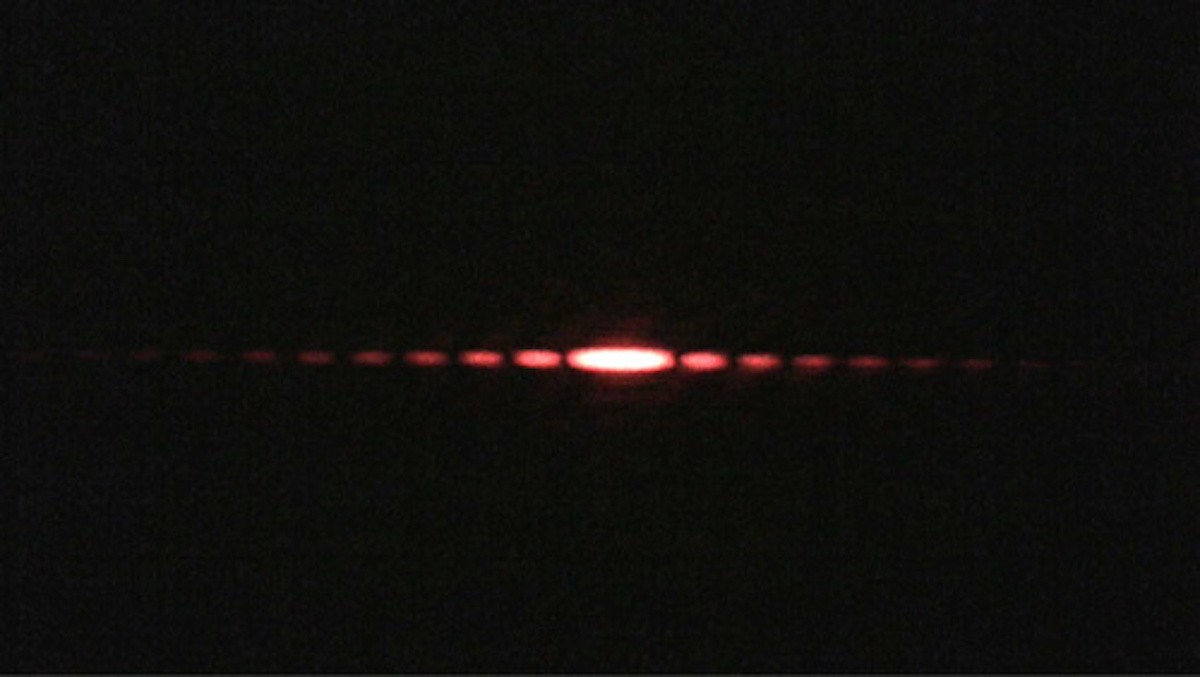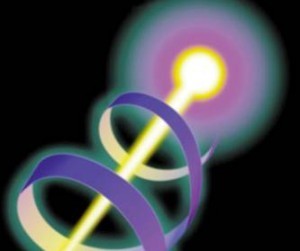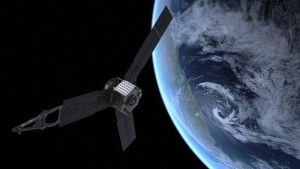Heisenberg’s uncertainty principle is the foundational concept of quantum theory. It’s also commonly misunderstood, which leads to a great deal of confusion about what quantum theory really says about the universe.
The uncertainty principle is often presented in terms of an observer effect. Suppose you want to measure the position of an electron. One way to do this is to shine light in the electron’s direction. When a photon scatters off the electron, you can measure how it scatters and determine where the electron is. But of course when the photon scatters off the electron it would cause the electron to scatter off in some direction. Measuring the position thus makes the electron’s motion (momentum) somewhat uncertain. Since any measurement of an electron’s position or momentum would make one or the other uncertain, there is a limit to what can be measured about the electron.
While that makes a nice intuitive picture, it’s completely wrong. The uncertainty principle isn’t a limit on what you can measure, but an inherent property of quantum objects. The reason you can’t precisely measure the position and momentum of an electron is not because you’re experiment is sloppy, but because electrons don’t have a precise simultaneous position and momentum.
Heisenberg’s uncertainty is what leads to all the strange aspects of quantum objects, such as particle-wave duality and quantum tunneling. Unfortunately, quantum systems are often portrayed as weird things that keep changing the rules to keep you in the dark, or only become real when you look at them. Such descriptions assume that quantum systems should behave like everyday objects. But the universe is far more subtle. The everyday, common sense ideas we have about the world are often only rough approximations that human-sized objects seem to follow.
To really understand the universe, we sometimes have to view things through Heisenberg’s mirror.












Comments
Thanks for clearing that up. After my theoretical chemistry class I understood the uncertainty principle as something that exists in the nature of quantum objects, basically as what you just explained. But a few month back I read “A brief history of time” (well, the german translation of it) and it came across that the uncertainty principle is something that is tied to measuring location and momentum of quantum objects. In the book he explains that a more exact measurment of a quantum objects location requires light of a shorter wavelentgh thus light with more energy to influence the objects momentum. I understood this as the reason why the uncertainty exists. Seems like I got it right the first time 😀
Thanks again for clearing it up and thanks in general for the great homepage!
So, are we then able to, say like a Chessmaster, impose a number of effects on a photon or whatnot, beginning with a “larger” cascade of energy and redirecting the particle repeatedly similar to a funnel thereby creating a situation where the “speed and location” can both be calculated and known quantum pairs created? Perhaps, if the funnel is inverted instead and a “light cone” is created and a parabolic dish of sorts can (either absorb, deflect, or) reflect the stray quanta within the ring so that a porthole can be made from the other side…not unlike a projector behind a “stargate” where the projector can make the ring active? Wormhole anyone?
Perhaps not…and I’m just connecting random snippets of popular science and science fiction for my own amusement. Like Camelot… ’tis a silly place.